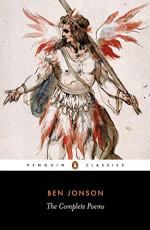|
This section contains 203 words (approx. 1 page at 400 words per page) |

|
Poetry
Poetry itself is a symbol in this poem, representing attention and self-expression. Jonson uses the details of poetic composition, such as rhythm and rhyme, to depict his interior life--the things he notices, and the things he wishes to share with the world.
The Muse
The muse represents artistic inspiration. The nine muses are ancient Greek goddesses who each represent one of the classical arts. They are frequently used in poetry as a symbol of a writer's inspiration.
Cupid's bow
Cupid's bow symbolizes falling in love. In Roman myth, Cupid was a god who took the form of a young boy with a bow and arrow. One shot from his bow could make anyone fall in love immediately. In the poem, Jonson compares Wroth's writing to Cupid's bow, depicting it as having the same power to generate romantic feeling.
Ceston
The "ceston" represents conclusion and finality. A...
|
This section contains 203 words (approx. 1 page at 400 words per page) |

|




